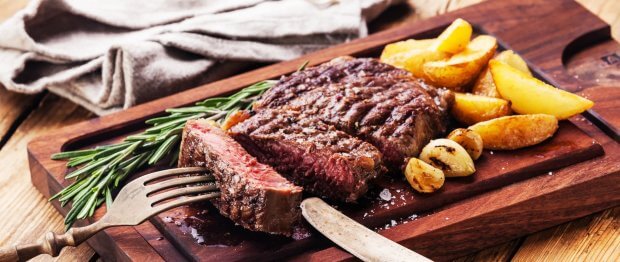This article started life as a comment on the Friday News, but it quickly grew beyond mere comment territory, so here it now becomes an article of its own. And in that vein, feel free to contribute your own article HERE if the mood strikes you (all welcome – you can see our standards are self-evidently decidedly low).
But regardless of its origin story, herein are some quick observations from my comfy lounge-chair on what’s gone wrong for Saint Joe’s attack game plan in the 2nd half of the 2025 test season.
Firstly, we need to understand some historical context: for years the Wobblies tried to play a bastardised Kiwi/Brumby style of game based on wider pods of forwards where the basic plan was for the ball to move through a pod runner to attract defenders and then either go to ground quickly (to create fast ruck ball) or play ‘out the back’ to a sweeping playmaker and shift the attack to the edges. The theory was to play ultra-fast laterally to continually stretch and compress opposing defences, looking to either create a glaring overlap (as the D adjusted at speed, tired and got its numbers wrong) or to create an obvious defensive mismatch to exploit (think Tom Wright chiming into the line against a lumbering tight forward marooned in midfield by speed of play).
What that game plan was not interested in was anything that slowed the ruck-recycle speed as that was viewed as only allowing defences to reset. Indeed that style of play doesn’t even mind if you lost a little ground in the pod so long as you got the fast ruck ball. It favoured wide-running pods in space (not tight running) and fast ruck recycle (not post-contact metres).
So nearly a whole generation of Aussie players came through trained to execute a game plan wherein the play was deliberately contrived to be lateral and relying on ultra-fast ruck-ball to achieve victory through speed of ball movement.
One of the notable obvious elements of that style of play was that Big Men were generally unsuitable to that style as they naturally struggled with the game speed as the minutes grew. So we lost a lot (all?) of the big men from domestic rugby as they were labelled fat or unfit because they couldn’t maintain that level of play speed (think the likes of Emmanuel Meafou, Skelton, Pone Fa’amausili, Ollie Hoskins and more). We also lost most of the agile tight running loosies (like Jock Dempsey and Pete Samu) as tight runners weren’t wanted/needed in the wider pod game.

The other notable issue was that this style became so ingrained into our lads, and ubiquitous in all levels of Aussie rugby, that it became the factory-reset default game-style they all knew in their sleep and would revert-to when things get tough/wild.
Conversely, Joe Ball attack play is almost the exact opposite of this style. It’s a much more ‘meat & potato’ style of play (which by the way I love as a general principle). Joe Ball has two types:
Joe Ball Type 1 needs Big Men as it uses close runners (generally directly off 9) to punch deep and hard closer to the ruck. Its purpose is to force defenders to bunch and then retire at increasing speeds. The goal/hope is to use bulk in close to smash and smash through to either establish an ant-hill attack through the gap (like Fiji and Argentina do so well), or until it draws an offside or ruck penalty from the D as they roll back on themselves and compress. Then, as soon as the Ref calls penalty advantage, all in-tight players become distributors to move the ball at least 4-5 passes wide fast, using multiple sweepers, looking to link wide and attack around the now-compressed D.
Joe Ball Type 1 requires heavy ball carriers in-tight like Jimmy Slips coming around the corner, or just big bodies crashing up close in like Tupou, Skelton, Hooper, LSL and Bell to get the train chugging, supported by a running and short-passing 9. This approach also quite likes/values post-contact metres to drag more defenders in and back around, while support players are equally running tight and deep (not wide and flat) to roll the ruck over for quick(ish) recycle. This suits big bodies by not expecting them to continuously sprint 20metres sideways to wide pods, but instead allows them to keep rolling 2-5 metres straight ahead. It’s meat & potatoes stuff.
Joe Ball Type 2 then comes out as the minutes grow and our playmakers start to recognise that once the Type1 plan has contrived to compress and fatigue the defence, they can pick their moment to skip the tight-running bit and bounce out through a 10/15 distribution/sweeper link to exploit the wider spacing created by a compressing defensive line.
Joe Ball Type 1 also means that by having big lads on field, playing with tails up, the lineout drive and scrum also benefit from the added boeuf et frites and so move from mere ‘survival’ restart tools to heavy weapons in their own right – as we have done so. Thus the meat and potatoes style feeds in on itself and spirals up.
We saw Joe Ball coming more and more to fruition last year and it certainly paid dividends early in the Wobbs 2025 season with the result being clear via a 50% win record in our first 8 tests of 2025. To be fair, while a 50% win/loss ratio is perhaps not flattering on the prima facie, it was certainly a much-improved outcome on recent seasons and was even arguably good when considering the calibre of opponents (BIL’s and Saffas in particular).
But now the wheels have fallen off in the second half of the Wobbs 2025 season, and other than what was truthfully an ugly 4pt win over Japan, we’ve tumbled to where we are now, with three northern losses on the trot and staring into the maw of an immensely capable French outfit.

But why? How did we get here? What changed? In my opinion, the issue that Joe Ball has run into in the 2nd part of 2025 is two-fold:
1. As made clear above, Joe Ball Type 1 requires big bodies for both the running game and the set-piece game. Even if the D knows what’s coming and are packed in tight for the tackle or the maul, it doesn’t matter as long as you bring the beef. Indeed, even with the ruck game, it still doesn’t matter if the nominal ruck speed is initially a little slow as long as you start grinding forward. And this style suits a running half like Gordan, which may explain the prolonged stickiness of his incumbency. But if you lack beef (think Skelton, Slips, LSL, Bell, Hooper, Tupou, BobbyV etc) you can’t get going.
So in H2, without Slips, Skelton, LSL, Hooper et al being consistently fit, available and ready, we’ve had too many lightweights running into compressed defences and so going backwards (think Pollard, Harry & Frosty). The lived experience in H2 is that we haven’t had the meat to get the train rolling.

2. When Joe Ball Type 1 didn’t pay as expected (because we are lacking or not using the bigger lads effectively), our lads firstly get rolled backwards in tight. This then creates on-flow issues as Pigs revert to type and go back to the in-grained Brumby/Kiwi mis-mash of wider pods standing flat-footed trying to create fast-ball through fast ruck-speed. From there it has gone to hell in a hand-cart:
- Rush defences have eaten the wide & flat pod game-plan for breakfast and our 10’s have been consistently hammered by crash-tackling loosies
- Set piece rhythm and execution has flown out the window as confidence falls and fatigue grows (negating our other Big Boy weapons)
- The 9 comes under immense pressure and starts ‘shoveling shite’ to those outside him
- Centres then take too much on themselves to contrive wonder plays with dinky-dumb kicks, offloads that were never going to work and other such low-percentage plays,
- So, then we go to even more box-bombing and short kicks etc which are not really part of the preferred plan.
- All up, we’re now exhausted, bashed, have over-played our hand and fallen to giving away penalties by the dozen. By the 60th minute onwards we are unable to maintain even a stable defensive line let alone a coherent attack. Thus we aren’t scoring points in H2 to save ourselves and we get consistently left behind by the play and scoreboard.

To be fair to St Joe, it is pertinent to also recognise some of the other losses and injuries along the way:
- The revolving door of no10’s hasn’t helped, particularly given two of the better choices were injury driven (Lolesio and Lynagh)
- The loss-of and inability to use effective weapons out wide such as Peaches Pietsch and Tom Wright
- The inability to nail down a reliable 12
- And let’s not even start on the continuing infatuation with JAS at 13.
And all this is before I even start on the challenges of running a passive defence in an era of rush-offensive defence, with a no13 who can’t lead it.
So what’s the answer? Sack the coach again? Change the game plan again? What? All that discussion is for another day. Or feel free to take that challenge yourself and write an article to follow this. My purpose here was only to point out what’s gone wrong with the Joe attack game plan in the 2nd half of 2025 at a general, tactical level.
I hope that all makes sense, but as ever, feel free to tell me how wrong I am in the comments section below. Now, to France…


